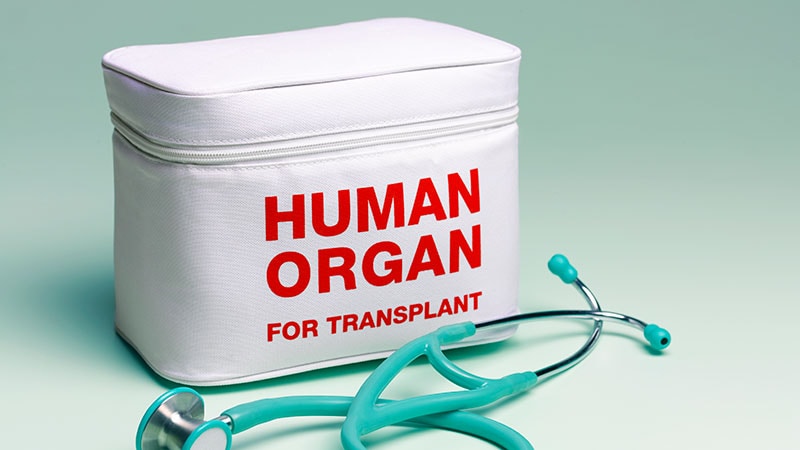TOPLINE:
A new continuous multivariable allocation score, called the US candidate risk score (US-CRS), outperformed the current therapy-based 6-status system in rank ordering heart transplant candidates by medical urgency, new research suggested.
METHODOLOGY:
- Investigators developed the US-CRS, which incorporates clinical, laboratory, and hemodynamic data, by adding a predefined set of predictors to the current French-CRS.
- The Scientific Registry of Transplant Recipients–based observational study that evaluated the score included US adult heart transplant candidates listed between 2019 and 2022, split by center into training (70%) and test (30%) datasets.
- The performance of the US-CRS model, French-CRS model, and 6-status model was evaluated by time-dependent area under the receiver operating characteristic curve (AUC) for death without transplant within 6 weeks and overall survival concordance with the integrated AUC.
TAKEAWAY:
- A total of 16,905 heart transplant candidates (mean age, 53 years; 73% male; 58% White) were listed in the registry during the study period, and 796 patients (4.7%) died without a transplant.
- The final US-CRS model included time-varying short-term mechanical circulatory support (ventricular assist–extracorporeal membrane oxygenation or temporary surgical ventricular-assist device), the log of bilirubin, estimated glomerular filtration rate, the log of B-type natriuretic peptide, albumin, sodium, and presence of a durable left ventricular assist device.
- In the test dataset, the AUC for death within 6 weeks of listing was 0.79 for the US-CRS model, 0.72 for the French-CRS model, and 0.68 for the 6-status model.
- The overall concordance index was 0.76 for the US-CRS model, 0.69 for the French-CRS model, and 0.67 for the 6-status model.
IN PRACTICE:
“The US-CRS has better discrimination than the current 6-status ranking system [and] may be useful for ranking candidates by medical urgency,” the authors wrote, noting that the 6-status system is known to be susceptible to manipulation and has limited rank ordering ability.
In a related editorial, Michelle M. Kittleson, MD, PhD, of Smidt Heart Institute, Cedars-Sinai Medical Center, Los Angeles, California, said that the US-CSR is “an important step away from subjective physician decision-making,” although it’s not clear whether the score will perform adequately in disadvantaged groups such as women and minorities or whether there will still be a role for exception requests when uncaptured risks are identified.
SOURCE:
The study, led by William F. Parker, MD, MS, PhD, University of Chicago, Chicago, Illinois, was published on February 13, 2024, in JAMA.
LIMITATIONS:
The study had several limitations. The variables in the registry were reported by the individual transplant centers, introducing the potential for recall or misclassification bias. The use of OPTN or Social Security Administration–verified deaths may have led to underreporting. The US-CRS was not validated on an external dataset.
DISCLOSURES:
Parker received funding for the study from the US National Institutes of Health (NIH) and reported receiving grants from the NIH and from Green well Foundation outside the submitted work. Kittleson reported no conflicts of interest.
Source link : https://www.medscape.com/viewarticle/new-score-predicts-risk-death-heart-transplant-list-2024a1000359?src=rss
Author :
Publish date : 2024-02-14 13:46:24
Copyright for syndicated content belongs to the linked Source.
